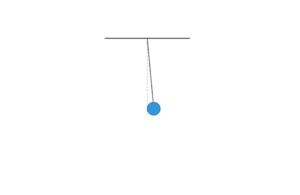Function Periodicity Visualizer
Example
Question:
Which of the following functions of time represent (a) periodic and (b) non-periodic motion? Give the period for each case of periodic motion (\(\omega\) is any positive constant).
(i) \(\sin \omega t + \cos \omega t\)
(ii) \(\sin \omega t + \cos 2\omega t + \sin 4\omega t\)
(iii) \(e^{-\omega t}\)
(iv) \(\log(\omega t)\)
Solution:
(i) \(\sin \omega t + \cos \omega t\) is a periodic function (can be written as \(\sqrt{2} \sin(\omega t + \pi/4)\)), with period \(2\pi/\omega\).
(ii) \(\sin \omega t + \cos 2\omega t + \sin 4\omega t\) is also periodic. Each term is periodic with periods \(2\pi/\omega\), \(\pi/\omega\), and \(\pi/2\omega\) respectively. The smallest interval after which the sum repeats is \(2\pi/\omega\).
(iii) \(e^{-\omega t}\) is non-periodic—it decreases monotonically with time and never repeats its value.
(iv) \(\log(\omega t)\) is also non-periodic. It increases with time, never repeats and diverges as \(t \to \infty\).
Function Information
Select a function to see its properties and periodicity information.



